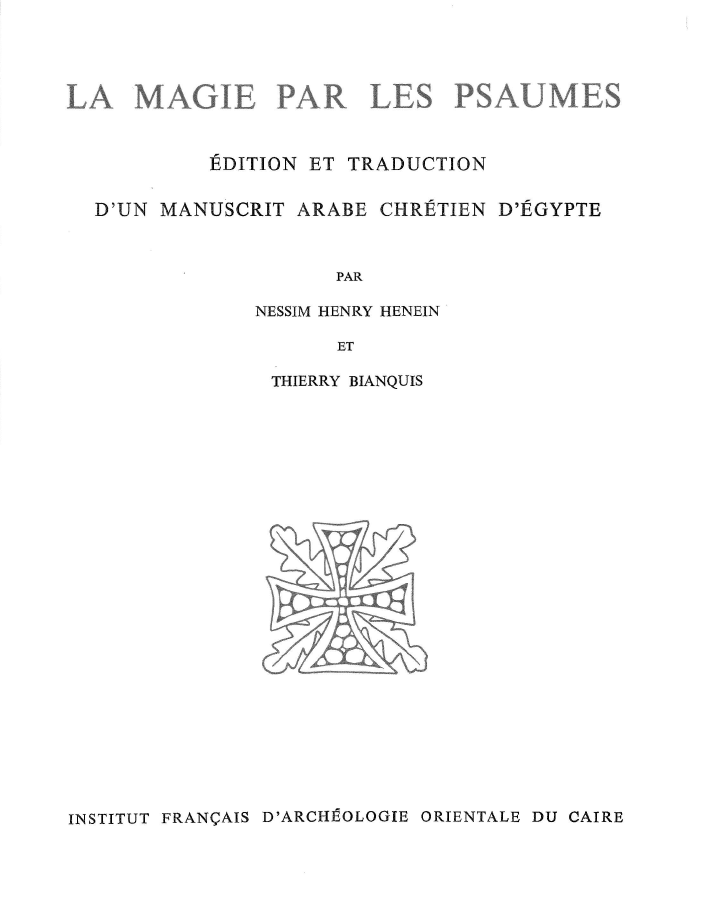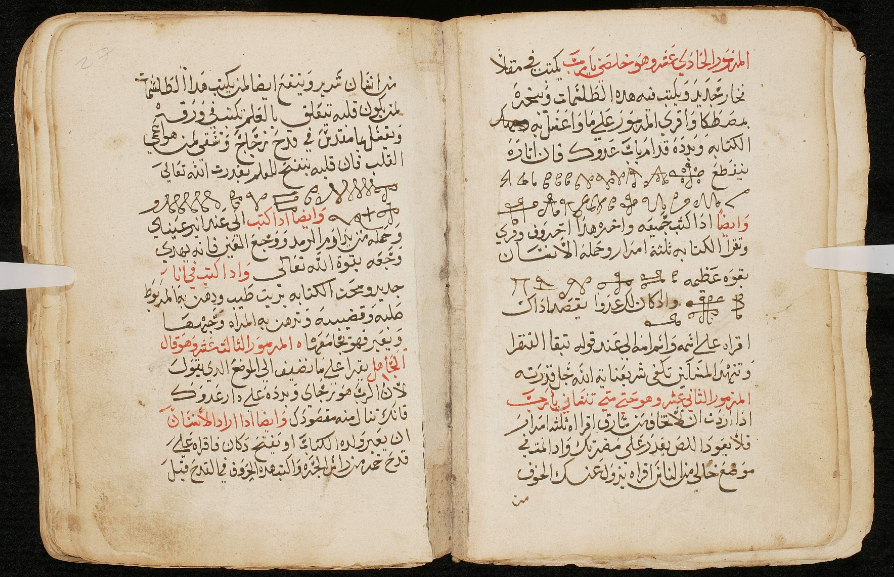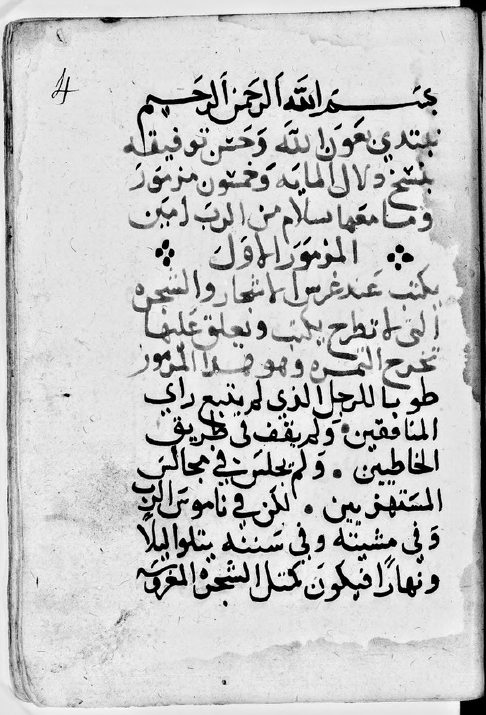The book of Psalms plays a significant role in both Judaism and Christianity. The psalms are used in prayer, both in public worship and in the believer’s devotional life. The Jewish morning prayer, the פְסוּקֵי דְּזִמְרָא, and the Christian liturgy of hours consist mainly of psalms. Among the different denominations of the Christian church, and especially in monastic orders, monks have to pray the psalms every day. In the Catholic rite, the entire book of Psalms is read in a month, in the Byzantine rite in a week, and in the Coptic rite in a day.
The psalms are well suited to their task due to the variety of subjects covered, almost every aspect of life. There are, for example, psalms for thanksgiving, for safety in traveling, for the sick, for the broken-hearted, and many others. Believers use the psalms not only in liturgical prayer, but also on a personal level. They recite or write those psalms that fit their current situation. It is most probably through this that the psalms began to be used in superstitious practices. Believers used the psalms to seek help and to find solutions for their problems. They used them for protection from plague, disease, and the like. They did this either by reciting the psalms orally or by writing them down (later in the form of amulets). The Jewish work Sefer Shimmush Tehillim provides a manual on the magical use of the psalms and assigns to each psalm a specific magical purpose together with an indication of how to use it. There are psalms against diseases, robbers, and miscarriage, among other misfortunes, and others that can be used to avoid the actions of enemies and imprisonment, for example. Unfortunately, there have been few studies on this topic, although the edition of the Sefer Shimmush Tehillim by Rebiger is a commendable achievement, and has made available to us what is perhaps the source of similar traditions in Arabic, Syriac, and Ethiopic. Rebiger himself has pointed out that there is a Judeo-Arabic translation of the Aramaic text, from which only two fragments have been published.[1]
In the Christian Arabic tradition, the book that attest to this practice of magical use of psalms is commonly known as Dallāl al-mazāmīr, that is to say, “A guide/manual to the psalms.” However dallāl means more than a mere guide, and is specifically a guide that contains instructions on the use of something. Hence, the title refers to a guide that gives instructions to the use of psalms for various purposes.
There is not yet a study that gives a complete list of the extant manuscripts of the Dallāl. Georg Graf mentions four manuscripts in his Geschichte der christlichen arabischen Literatur: Vatican, BAV, Borg. ar. 28 (1558); BAV, Vat. ar. 450 (14th c.), fols. 170v–175v (incomplete); Birmingham, Mingana Christ. Ar. 114 (19th c.); Mingana Syr. 281 (Karšuni).[2] Four other manuscripts can be added to this count. First, there is Paris, BnF, ar. 44 (1632), which only contains the titles of each psalms, rather than the entire psalm. Second, there is a manuscript in St. Mina’s Monastery in Old Cairo, no. 15, fols. 191v–216r; this was edited and published by Antoine Khater, as I will discuss below.[3] Then there is a manuscript of unknown origin that Henry Henein and Thierry Bianquis published in 1975.[4] Finally, there is Mardin, Church of the Forty Martyrs, no. 879 (17th c.), which contains at the end a division of the 151 psalms into 126 chapters based on their benefits.[5]
There must have been many more manuscripts than those mentioned here. During the patriarchate of Pope Shenouda III (1971–2012), the Coptic Church prohibited the use and distribution of the Dallāl, and it became a kind of banned book: just as the Catholic Church had banned Sefer Shimmush Tehillim in 1755, the Coptic Church acted similarly, but without an official written statement. As a result, many monasteries burned their manuscripts of the Dallāl.
Dallāl al-mazāmīr has been published four times, all in Egypt. The first publication was by Murqus Ǧirǧis,[6] as a handbook under the title Kitāb Dallāl al-mazāmīr al-kubār (Book of the guide to the great psalms) alongside a booklet titled Kitāb Dallāl al-Dallāl (The guide to the guide [of the psalms]) on the mathematical speculations and permutations of every psalm.[7] The editor gives no information about the source of the text and there is no date of publication. They are in no way critical editions of the work; the publisher wanted to preserve these books from being lost, as he believed in their effectiveness. In the preface of the book, he writes:
فإنا لما رأينا أيادي الجهلاء ابتدأت تلعب بطبع كتاب دلال الدلال ودلال المزامير بكامل الأسرار التي وضعها قدماء المصريين، فحرفوها. فأصحبت بلا فائدة. وخوفا من ضياع هذا العلم النفيس وهو البقية الباقية من علوم أجدادنا. قد انتدبنا لجنة من العلماء الروحانيين لمراجعتها على ما استلموه
“When we saw the hands of the ignorant began to mess up in printing the book of Dallāl al-Dallāl and the Dallāl al-mazāmīr, with all the secrets laid down by the ancient Egyptians, they changed them, and (therefore) they became without use. For fear of losing this precious knowledge, which is the remnant of the sciences of our ancestors, we commissioned a committee of spiritual scholars to review what was handed down to them.”[8]

In 1970, Antoine Khater published the Dallāl with a French translation in the Bulletin de la Société d’archéologie copte; as mentioned above, this came from a manuscript from 1430 in St. Mina’s Monastery in Old Cairo, no. 15, fols. 191v–216r. Five years later, in 1975, Henry Henein and Thierry Bianquis also published an edition of the Dallāl with a translation into French. Henry Henein writes in the preface to the edition how he knew about the use of psalms for magic through someone who owned pigeon towers that were abandoned by pigeons as a result of using the magic of the psalms. The editor also tells us how he acquired the manuscript of the Dallāl from a tailor in Aḫmīm. The tailor additionally lent him a booklet titled Muršid al-ḍarīr ila sifr al-mazāmīr (Guide of the blind to the book of Psalms) or Miftāḥ mazāmīr Dawūd al-nabī (The key to the psalms of David the prophet) or Dallāl al-Dallāl (The guide to the guide). The text in the published edition of Henein and Thierry appears to have the same Vorlage of the edition of Antoine Khater, since there are only few differences in the wording of the text.

The use of the psalms for superstitious purposes was not only limited to Jews or Christians: the Dallāl was also well known in Muslim circles. Ahmad Ḥiǧāī al-Saqqa published a new version of Murqus Ǧirǧis’s book in 2001 under the title Mazāmīr al-nabī dāwūd fī al-siḥr wa-l-tanǧīm ([The use of] the psalms of the prophet David for magic and astrology). In the introduction, al-Saqqa quotes several texts from the Old Testament, the Didache (a Christian text from the first century), and the Quran on the prohibition against using magic in Judaism, Christianity, and Islam. Unlike the original text published by Ǧirǧis, al-Saqqa cites the whole psalm in each case, and not just the first words of it. The psalms are quoted from the Van Dyke Bible translation, which these days is the most widely used Arabic Bible translation in Egypt.
The edition of Henein and Bianquis is republished in another book, of obscure origin and without date, which is attributed to a certain bishop called Zakarios the Wise (al-ḥakīm); but the book claims that the text is from an ancient manuscript in Istanbul. In the introduction, the publisher explains the instructions on how to calculate the numerical value of the letters of each psalm, constructing the holy names that must be called out for the psalms to be effectively used for magic. Many of the names are not otherwise known. Sentences like the following are common in the book:
أجيبوا يا روحانية وخدام هذه الآيات والمزامير وتوكلوا بكذا وكذا وافعلوا كذا وكذا بحق اهطم فشذ روجشا اجاش طهراش راش باروخ رياخ ظهر
“Answer, O spirits, and servants of these verses and psalms, and take care of that issue or that issue and do such and such for the sake of ahṭam fašz ruǧša aǧāš tahrāš rāš barūḫ riāḫ ẓahr …”
At the end of the book there are some spells used for magical purposes. These contain prayers asking for revenge or for getting rid of enemies or for being acceptable to the authorities. Among the names called in these spells are names of God from the Old Testament, such as Adonai, Tzevaot, El Shaddai, and Ehyeh asher ehyeh. In order to complete the whole of the book of Psalms, the publisher provides the first psalm, which was missing from the edition of Henein and Bianquis, in the Van Dyke translation.

What is in the Dallāl and how is it constructed?
The Arabic versions of the Dallāl retain almost the same structure as the Hebrew text of Sefer Shimmush Tehillim. The numbering of the psalms follows the Septuagint. Only the first few words of each psalm are quoted; the reader is expected to be well acquainted with the text, or able to find it easily in other manuscripts. For each psalm, a number of situations where the psalm can be applied are listed, together with some instructions on how to use it effectively. Finally, the text calls – though not in all cases – for the saying of holy names, which in some cases are not known. At the end of some psalms, particular charaktêres are listed that would be used in producing an amulet; these charaktêres differ according to the purpose the psalm is used for.

The topics in the book cover almost every aspect of life. Henein grouped these topics under 19 titles, which include about 140 cases. These cases cover almost every need in life: accidents, delivery of a child, doing bad or good things to others, protection from disease or enemies, and so on.
None of the published editions of the Dallāl has a critical apparatus or a comparison between different manuscripts. The textual witnesses of the Dallāl vary slightly between the manuscripts when it comes to the purpose and use of the psalms: some have more uses for certain psalms than others.
In a short article published in 1978, the Hungarian Arabist and biblical scholar Alexander Fodor compared a manuscript of the Sefer Shimmush Tehillim from the Kaufmann collection in the Hungarian Academy of Sciences (shelf mark A.241) with the Arabic version of the Dallāl published by Antoine Khater in 1970 and the one published by Henein and Bianquis in 1975. Fodor compared only the first seven psalms with the corresponding Hebrew.[9] He tried to find the relationship between the Hebrew text and the Arabic one with regard to the content or the instructions on how to use the psalms in question. Although there are a few similarities when it comes to the motives for the psalms, they are still different; and the similarities generally arise where the motives for a particular psalm are taken from the psalm itself. For example, one of the ways Psalm 1 is used is to write it down and put it under a tree, including while planting the tree. This is clearly connected with what is stated in the psalm: “That person is like a tree planted by streams of water, which yields its fruit in season and whose leaf does not wither – whatever they do prospers” (Ps 1:3). Also connected here, through the same idea of fertility, is the use of the psalm for a woman who wants to have children. But these cases of similar motives between the Hebrew and Arabic version are few.
Perhaps the most interesting aspect of the Dallāl is the range of materials that are required in using the psalms for magical purposes. Among others, there is mention of parchment, birds, ink, and different types of oils and fragrances. A study of these materials from a social viewpoint may deliver interesting information about the society in which this text was used.
Something which is still very obviously lacking is a critical edition of the Dallāl al-mazāmīr. Such an edition would certainly open new fields of study for this text, from a wide range of approaches, perhaps especially in terms of its relation to the Sefer Shimmush Tehillim.

Joseph Faragalla (PhD 2018, Philipps University of Marburg) is a principal investigator of the DFG-funded project “Simʿān ibn Kalīl’s Commentary on the Gospel of Matthew. Critical Edition, Translation and Research on the Religious-Historical Significance of the Work” based at the Institute of Near and Middle Eastern Studies, Ludwig Maximilian University of Munich. His main fields of interest are Christian Arabic Literature, theology, biblical exegesis in Arabic and Christian Arabic manuscripts.
Footnotes
[1] See Bill Rebiger, ed., Sefer Shimmush Tehillim: Buch vom magischen Gebrauch der Psalmen; Edition, Übersetzung und Kommentar, Texts and Studies in Ancient Judaism 137 (Tübingen: Mohr Siebeck, 2010), 31n132.
[2] Georg Graf, Geschichte der christlichen arabischen Literatur, vol. 2, Die Schriftsteller bis zur Mitte des 15. Jahrhunderts (Vatican: Biblioteca apostolica vaticana, 1947), 469.
[3] Antoine Khater, “L’emploi des psaumes en thérapie avec formules en caractères cryptographiques,” Bulletin de la Société d’archéologie copte 19 (1967–68): 123–176.
[4] Nessim Henry Henein and Thierry Bianquis, La magie par les psaumes: Édition et traduction d’un manuscrit arabe chrétien d’Égypte (Cairo: Institut français d’archéologie orientale du Caire, 1975).
[5] I am grateful to Vevian Zaki, who drew my attention to this manuscript from the collection of HMML. On Judeo-Arabic and Arabic magical texts translated from Aramaic or Hebrew, see Gideon Bohak, “Specimens of Judaeo-Arabic and Arabic Magical Texts from the Cairo Genizah,” in Amulets and Talismans of the Middle East and North Africa in Context, ed. Marcela A. Garcia Probert and Petra M. Sijpesteijn, Leiden Studies in Islam and Society 13 (Leiden: Brill, 2022), 15–46.
[6] Murqus Ǧirǧis published also Sawirus ibn al-Muqqafaʿ’s Kitāb ad-durr al-ṯamīn fī īḍāḥ al-dīn (Cairo, 1925).
[7] Murqus Ǧirǧis, ed., Kitāb Dallāl al-Dallāl (Cairo, n.d.).
[8] Murqus Ǧirǧis, ed., Kitāb Dallāl al-mazāmīr al-kubār (Cairo, n.d.), 2.
[9] Alexander Fodor, “The Use of Psalms in Jewish and Christian Arabic Magic,” in Jubilee Volume of the Oriental Collection 1951–1976: Papers Presented on the Occasion of the 25th Anniversary of the Oriental Collection of the Library of the Hungarian Academy of Sciences, ed. Éva Apor (Budapest: Library of the Hungarian Academy of Sciences, 1978), 67–71.

